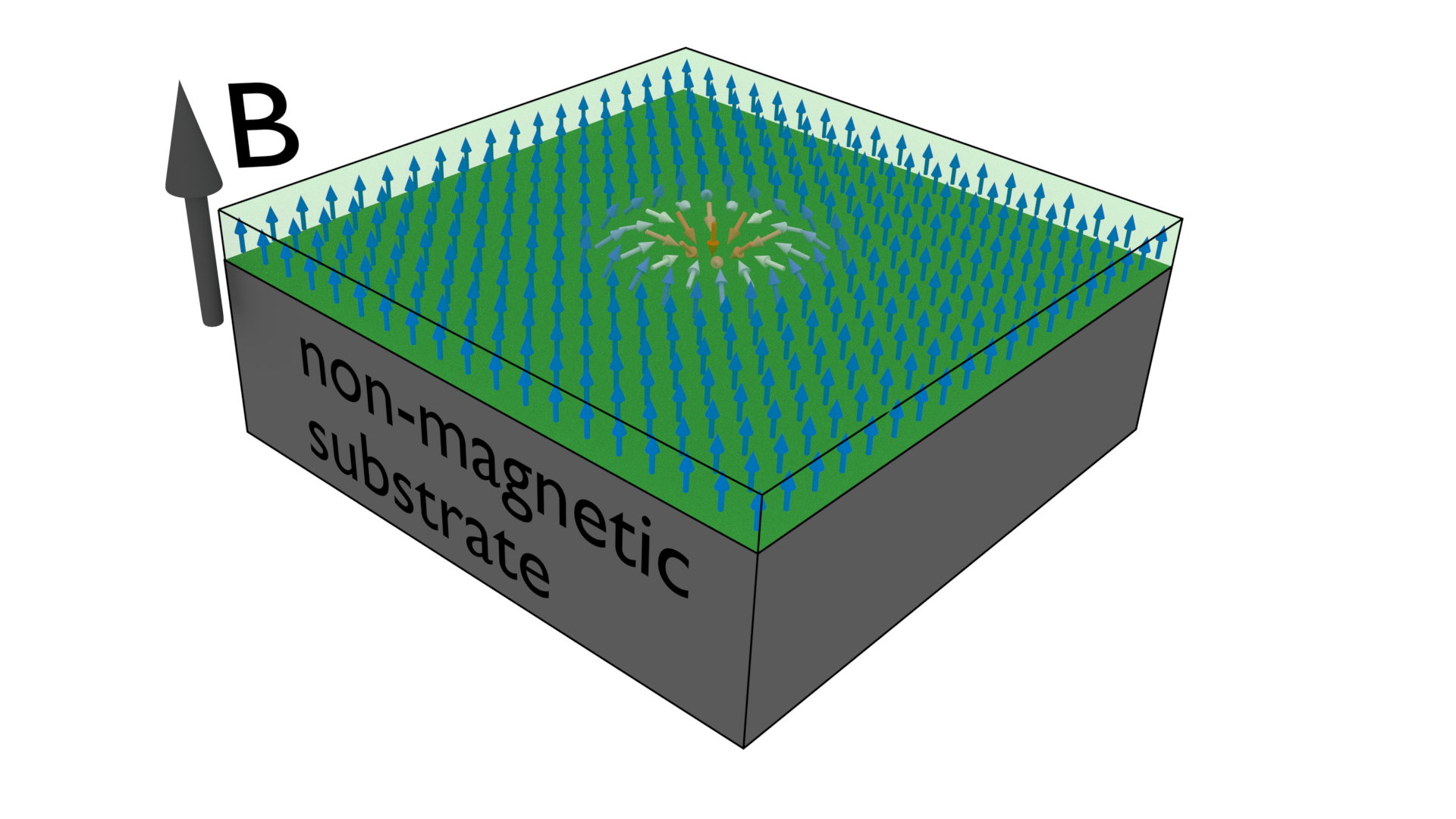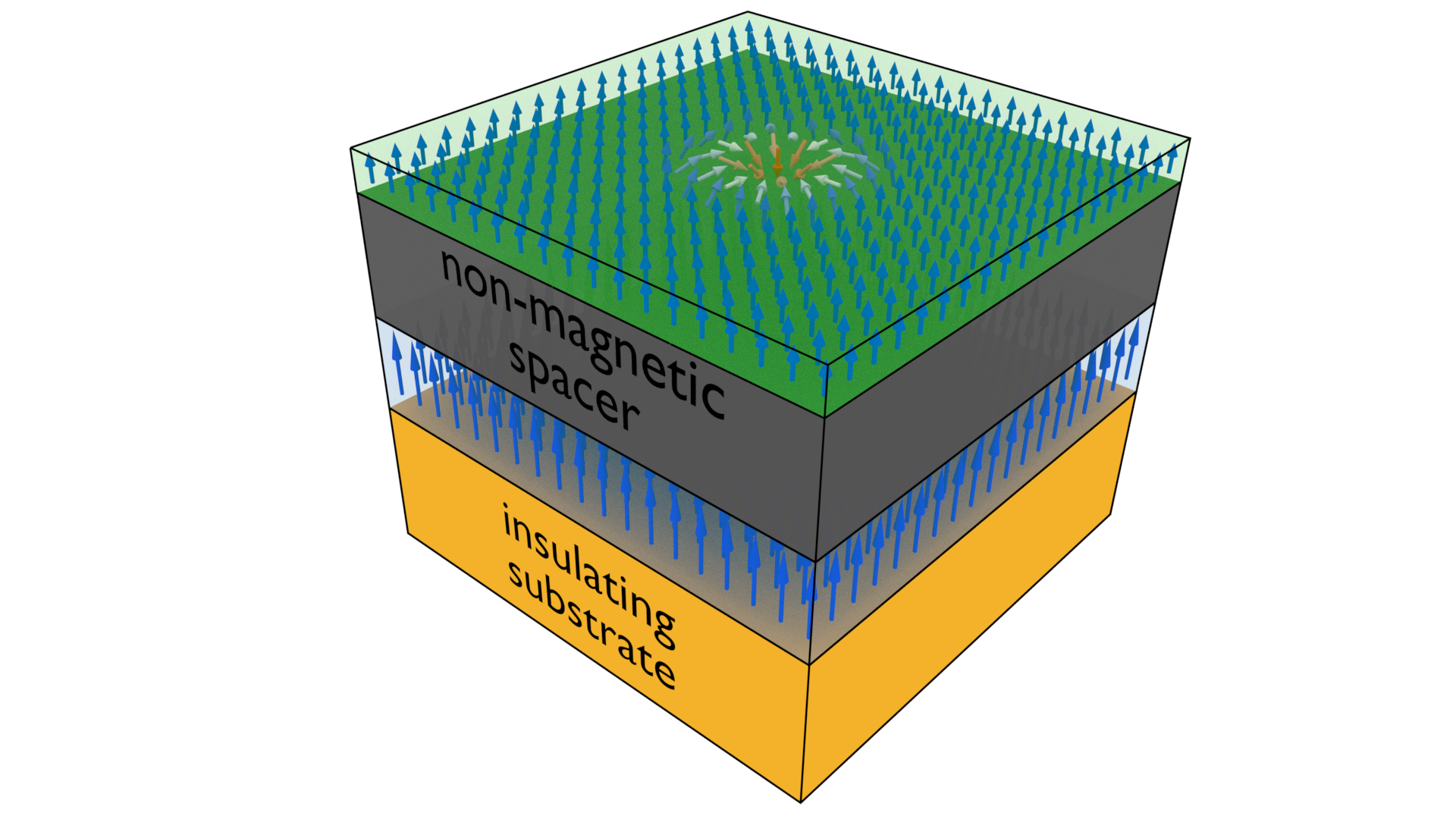Phase 1
Room-temperature zero-field magnetic skyrmions in epixatial ferromagnetic multilayers

The initial part of the project has been characterized by the development of epitaxial magnetic multilayers on top of insulating single crystal substrates. The interest in growing metallic multilayers on top of insulating substrates lies in the possibility to explore the magneto-transport properties of the developed materials stacks, such as current-induced skyrmion motion. We successfully developed a recipe for the growth of epitaxial metallic multilayers on top of insulating MgO single crystals. Via spin-polarized low energy electron microscopy (SPLEEM) we were able to explore the type of magnetic texture stabilized in those multilayers. The investigation with the SPLEEM confirmed the presence of magnetic spin-textures with a uni-directional sense of rotation, which is a key requirement for the stabilization of magnetic skyrmions. After the establishment of multilayers hosting non-collinear magnetism, we further developed our stacks so to obtain the stabilization of magnetic skyrmions at room temperature in no external magnetic field. We exploited the interlayer magnetic coupling between two different ferromagnetic thin films separated by a non-magnetic spacer (see figure below) in order to nucleate skyrmions at zero field. After their stabilization we also investigated their topological nature, revealing their handedness (right handed vs left-handed). Interestingly, by tailoring the thickness of the non-magnetic spacer we were able to fine-tune the strength of the coupling between the two magnets, which resulted in the control of the skyrmion size and areal density. The main findings of this part of the project have been summarized in a manuscript (title: Tuning the properties of zero-field room temperature ferromagnetic skyrmions by interlayer exchange coupling) which is currently under review for an international peer-reviewed journal.

